Blog Archives
The Benefits of Going Barefoot
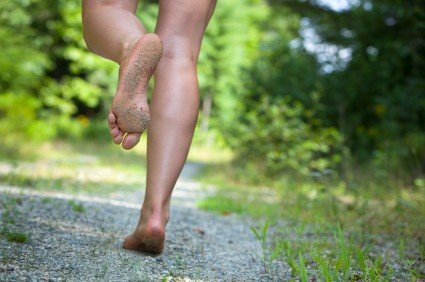 Going barefoot when doing exercise may lead to the buildup of stronger muscles and bones, as well as flexibility in the feet. Dr. Phil Hoffman suggests that footwear can be regressive for the feet, potentially weakening the structure of the foot because the shoe offers support while limiting movement. Footwear however, does offer protection for our feet. It is recommended to try going barefoot in safe environments to strengthen and train the feet.
Going barefoot when doing exercise may lead to the buildup of stronger muscles and bones, as well as flexibility in the feet. Dr. Phil Hoffman suggests that footwear can be regressive for the feet, potentially weakening the structure of the foot because the shoe offers support while limiting movement. Footwear however, does offer protection for our feet. It is recommended to try going barefoot in safe environments to strengthen and train the feet.
Barefoot running has its own share of benefits and disadvantages. If you have any concerns about your feet or ankles, contact Dr. Sharon Pletcher of Pennsylvania. Our doctor will diagnose and treat your foot and ankle needs.
Barefoot Running
The Impact of Barefoot Running
-Running without shoes changes the motion of your running, as most running is done by landing on the heel of the feet.
-Running barefoot requires a different way of running; the landing is done on the front part of the feet.
The Advantages of Barefoot Running
-When running and landing on the front feet, the impact on the feet and ankle is reduced, this can reduce stress injuries.
-It strengthens muscles in the feet and ankles and the lower legs.
-Balance of the body is improved and there is a greater sensory input from the feet to the rest of the body.
The Drawbacks of Barefoot Running
-No protection while running, makes it likely that runners will land on sharp objects and scrapes, bruises and cuts on the feet will result.
-Blisters may form.
-Possibility of plantar fascia problems.
-Risk of getting Achilles tendonitis.
So what can runners do to make barefoot running safe? It’s best to make a slow transition from running shoes to barefoot running. Once the feet begin to adjust, try walking, then jogging and gradually increasing the distance. Minimalist running shoes may also be an option.
If you have any questions please feel free to contact our office located in State College, PA. We offer the newest diagnostic tools and technologies to treat your foot and ankle needs.
Turmeric As Alternative Treatment for Rheumatoid Arthritis
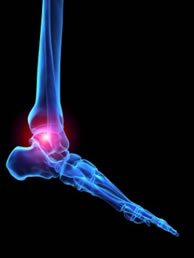 Turmeric is one potential alternative option for treating your rheumatoid arthritis. The University of Arizona has begun research into whether the botanical compound has any proven effect in treating arthritis symptoms as well as the necessary dose for treatment. According to the article, “turmeric has been used for centuries as an anti-inflammatory,” and is the “number one selling herb in health food stores.” Turmeric is said to be able to block proteins that cause inflammation responses in the body.
Turmeric is one potential alternative option for treating your rheumatoid arthritis. The University of Arizona has begun research into whether the botanical compound has any proven effect in treating arthritis symptoms as well as the necessary dose for treatment. According to the article, “turmeric has been used for centuries as an anti-inflammatory,” and is the “number one selling herb in health food stores.” Turmeric is said to be able to block proteins that cause inflammation responses in the body.
Because RA affects more than just your joints, including the joints in your feet and ankles, it is important to seek early diagnosis from your podiatrist if you feel like the pain in your feet might be caused by RA. For more information, contact Dr. Sharon Pletcher of Pennsylvania. Our doctor will diagnose and treat your foot and ankle needs.
What Is Rheumatoid Arthritis?
Rheumatoid Arthritis (RA) is an autoimmune disorder in which the body’s own immune system attacks the membranes surrounding the joints. Inflammation of the lining and eventually the destruction of the joint’s cartilage and bone occur, causing severe pain and immobility.
Rheumatoid Arthritis of the Feet
Although RA usually attacks multiple bones and joints throughout the entire body, almost 90 percent of cases result in pain in the foot or ankle area.
Symptoms
- Swelling & pain in the feet
- Stiffness in the feet
- Pain on the ball or sole of feet
- Joint shift and deformation
Diagnosis
Quick diagnosis of RA in the feet is important so that the podiatrist can treat the area effectively. Your doctor will ask you about your medical history, occupation, and lifestyle to determine the origin of the condition. Rheumatoid Factor tests help to determine if someone is affected by the disease.
If you have any questions please feel free to contact our office located in State College, PA. We offer the newest diagnostic tools and technologies to treat your foot and ankle needs.
Forward Tobias Harris Sustains Sprained Ankle Injury
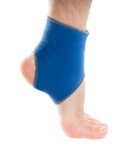 Tobias Harris, forward for the Orlando Magic, has recently suffered a sprained ankle. This is his second injury this season, since he also suffered an injury to the head that required seven stitches. His ankle injury occurred when he came too close to teammate, Nikola Vecuvic. Harris’ status has been day-to-day, with his status changing with reports on his health.
Tobias Harris, forward for the Orlando Magic, has recently suffered a sprained ankle. This is his second injury this season, since he also suffered an injury to the head that required seven stitches. His ankle injury occurred when he came too close to teammate, Nikola Vecuvic. Harris’ status has been day-to-day, with his status changing with reports on his health.
Ankle sprains are common, but need immediate attention. If you have any concerns about your feet, contact Dr. Sharon Pletcher of Pennsylvania. Our doctor will diagnose and treat your foot and ankle needs.
How Does an Ankle Sprain Occur?
Ankle sprains take place when the ligaments in your ankle are torn or stretched beyond their limits. There are multiple ways that the ankle can become injured, including twisting or rolling over onto your ankle, putting undue stress on it, or causing trauma to the ankle itself.
What are the Symptoms?
- Mild to moderate bruising
- Limited mobility
- Swelling
- Discoloration of the skin (depending on severity)
Preventing a Sprain
- Wearing appropriate shoes for the occasion
- Stretching before exercises and sports
- Knowing your limits can aid in prevention
Treatment of a Sprain
Treatment of a sprain depends on the severity. Many times, people are told to rest and remain off their feet completely, while others are given an air cast. If the sprain is very severe, surgery may be required.
If you have suffered an ankle sprain previously, you may want to consider additional support such as a brace and regular exercises to strengthen the ankle.
If you have any questions please feel free to contact our office located in State College, PA. We offer the newest diagnostic tools and technologies to treat your foot and ankle needs.
Specific Gene May Be Linked to Increased Risk of Stress Fracture Injury
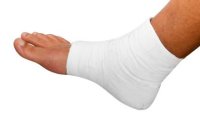 Stress fractures are commonly known as injuries caused by too much stress or fatigue on the bones, resulting in repeated trauma. Stress fractures are common among athletes and those who do strenuous physical activity. According to a study published in The Official Journal of the International Purine Club University of Liverpool, a particular gene may be associated with higher risks of stress fractures. This specific gene, P2X7R, showed that it affected bone mineral density and possibly “accelerated bone loss in post-menopausal women.”
Stress fractures are commonly known as injuries caused by too much stress or fatigue on the bones, resulting in repeated trauma. Stress fractures are common among athletes and those who do strenuous physical activity. According to a study published in The Official Journal of the International Purine Club University of Liverpool, a particular gene may be associated with higher risks of stress fractures. This specific gene, P2X7R, showed that it affected bone mineral density and possibly “accelerated bone loss in post-menopausal women.”
Activities, where too much pressure is put on the feet can cause stress fractures. If you have any concerns contact Dr. Sharon Pletcher of Pennsylvania. Our doctor will diagnose and treat your foot and ankle needs.
Dealing with Stress Fractures of the Foot and Ankle
The Stress Fractures occur on the foot and ankle when muscles in these areas weaken from too much or too little use. Then the feet and ankles lose support when walking or running from the impact of the ground. Since there is no protection the bones receive the full impact of each step. The stress on the feet causes cracks to form in the bones, thus called stress fractures.
What are Stress Fractures?
Stress fractures occur frequently in individuals whose daily activities cause great impact on the feet and ankles. Stress factors are most common among:
-runners
-people affected with Osteoporosis
-play tennis or basketball
-gymnastics
-high impact workouts
Symptoms
Pain from the fractures occur in the area of the fractures, and can be constant or intermittent. It will often cause sharp or dull pain with swelling and tenderness. Engaging in any kind of activity which involves in high impact will aggravate pain.
If you have any questions please feel free to contact our office located in State College, PA. We offer the newest diagnostic tools and technologies to treat your foot and ankle needs.
How Pronation Affects the Risk of Running Injuries
 If you’re going to do a lot of physical activity, make sure you have the proper equipment and footwear. A process when the foot rolls inward when a person runs or walks, called pronation, determines if feet are prone to injury. Overpronation and underpronation are especially dangerous, so make sure to get the proper footwear. Look for shoes that are comfortable and add support and stability. Neutral shoes are ideal for those who have slight pronation, and stability shoes are better for overpronation. The American Podiatric Medical Association recommends that those who have low arches should look for “a shoe designed for motion control and stability,” while those with normal arches should choose a shoe with “equal stability and cushioning for shock-absorption.” Those with high arches should search for more flexibility in shoes.
If you’re going to do a lot of physical activity, make sure you have the proper equipment and footwear. A process when the foot rolls inward when a person runs or walks, called pronation, determines if feet are prone to injury. Overpronation and underpronation are especially dangerous, so make sure to get the proper footwear. Look for shoes that are comfortable and add support and stability. Neutral shoes are ideal for those who have slight pronation, and stability shoes are better for overpronation. The American Podiatric Medical Association recommends that those who have low arches should look for “a shoe designed for motion control and stability,” while those with normal arches should choose a shoe with “equal stability and cushioning for shock-absorption.” Those with high arches should search for more flexibility in shoes.
The right running shoe is essentially different for every person. If you have any concerns contact Dr. Sharon Pletcher of Pennsylvania. Our doctor will diagnose and treat your foot and ankle needs.
Choosing the Right Running Shoes for Your Foot Type
Running is a physical activity although fun, can put a lot of stress on the joints, bones and ligaments of the body. Injury and stress on the foot can be an important factor on which kind of shoe you’re wearing. Running shoes should be worn based on your foot type. It is important to find out what fits you based on cushioning, stability and motion.
Determining your type
Speak with a shoe specialist or retail professional to see what your foot type is. They will be able to identify and measure your arch type, stride and gait.
Running Mechanics
When you are running or walking in your shoes, every step determines how your foot is landing. Pronation is the natural rolling of your ankle from outside to inside during foot strike.
Pronation is a correct form of walking or running. It helps absorb shock and store energy from your lower extremities. Neutral runners who pronate correctly do not need specific shoes, since they have stability and control.
Over-pronators
Those who run with excessive ankle rolling. Over-pronators tend to have ankles that angle inward, flat feet, and or bowed legs. This can cause a series of injuries: of the knees, ankles and Achilles tendons.
Under-pronation
Under-pronation is less common than over-pronation. This usually happens to those who have inflexible feet and high arches. Even though there is less rotational stress on the ankles and knees, it prevents any kind of shock absorptions. Under-pronation needs shoes with increase in cushion and flexibility.
If you have any questions please feel free to contact our office located in State College, PA. We offer the newest diagnostic tools and technologies to treat your foot and ankle needs.
How to Find the Right Running Shoes
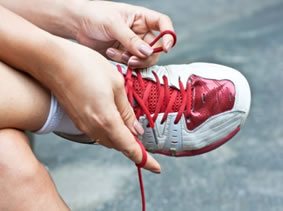 When it comes to marathon running shoes, it is important to plan ahead. Look for running shoes that are comfortable and will provide the most support for your beginner feet. Some shoes may cost upwards from $160 and certain pricey shoes can be what keep your feet or ankles from sustaining an injury. Finding a shoe store that specializes in running may be the best bet for your feet.
When it comes to marathon running shoes, it is important to plan ahead. Look for running shoes that are comfortable and will provide the most support for your beginner feet. Some shoes may cost upwards from $160 and certain pricey shoes can be what keep your feet or ankles from sustaining an injury. Finding a shoe store that specializes in running may be the best bet for your feet.
Finding a proper fitting shoe is important in reducing injuries and preventing foot problems. For more information about treatment, contact Dr. Sharon Pletcher of Pennsylvania. Our doctor will diagnose and treat your foot and ankle needs.
Proper Shoe Fitting
A common concern when it comes to foot health, having properly fitted shoes can help prevent injuries to the foot. Out feet affect our posture and gait, which in turn affects the biomechanics and overall bodily structure. With 33 joints, 26 bones, and over 100 ligaments, the potential for serious injury is much greater than one realizes. Although the feet cease growth in adulthood, they still change shape as they mature. Here are some factors to consider when it comes to investing in proper fitting shoes:
- Be sure the shoes fit correctly right away
- Ensure the ball of your foot fits comfortably in the widest portion of the shoes
- Even though they may look fashionable, improper fitting shoes can either create adverse conditions or exacerbate existing ones you may already have
- Walk along a carpeted surface to ensure the shoes comfortably fit during normal activity
Keeping in mind how shoes fit the biomechanics of your body, proper fitting shoes is vitally important. Fortunately, it is not difficult to acquire footwear that fits correctly. Be sure to wear shoes that support the overall structure of your body. Do your feet a favor and invest in several pairs of well-fitted shoes today.
If you have any questions please feel free to contact our office located in State College, PA. We offer the newest diagnostic tools and technologies to treat your foot and ankle needs.
Luxembourg Study finds Motion Control Sneakers can reduce Injuries
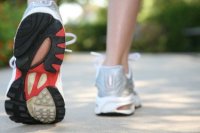 Running shoes that specialize in motion control may help control the risk of running injuries, according to a Luxembourg study. Those who run often and have flat feet or whose feet have a pronation, in which the feet rolled inward, benefited from motion control shoes. The study found that only those who had these particular conditions would be able to benefit from running shoes with motion control. Shoes that feature motion control had “a piece of plastic near the middle and a harder piece of foam on the inward side of the sole.” The study suggests that motion control can be more beneficial than shoes with no motion control.
Running shoes that specialize in motion control may help control the risk of running injuries, according to a Luxembourg study. Those who run often and have flat feet or whose feet have a pronation, in which the feet rolled inward, benefited from motion control shoes. The study found that only those who had these particular conditions would be able to benefit from running shoes with motion control. Shoes that feature motion control had “a piece of plastic near the middle and a harder piece of foam on the inward side of the sole.” The study suggests that motion control can be more beneficial than shoes with no motion control.
Runners can still be prone to running injuries even with proper precautions. If you are suffering from a running injury, contact Dr. Sharon Pletcher of Pennsylvania. Our doctor will diagnose and treat your foot and ankle needs.
How to Prevent Running Injuries
Many common running injuries are caused by overuse and overtraining. When the back of the kneecap starts wearing out and starts causing pain in your knee, this is commonly referred to as runner’s knee. Runner’s knee is a decrease in strength in your quadriceps and can occur if you’re not wearing properly fitted or supporting shoes. To prevent runner’s knee, focusing on hip strengthening is a good idea, as well as strengthening your quads to keep the kneecaps aligned.
What Are Some Causes of Running Injuries?
- One cause of a common running injury is called iliotibial band syndrome.
- Plantar fasciitis is also another common injury.
- Stress fractures can occur from overtraining, lack of calcium, or even your running style.
Best Ways to Prevent Running Injuries
- Wear footwear that fits properly and suits your running needs.
- Running shoes are the only protective gear that runners have to safeguard them from injury.
- Make a training schedule. Adding strengthening exercises as well as regular stretching can help keep you strong and limber and can lessen the possibility of injuries.
- Stretching keeps muscles limber, this will help you gain better flexibility.
If you have any questions please feel free to contact our office located in State College, PA. We offer the newest diagnostic tools and technologies to treat your foot and ankle needs.
Treating Your Toenail Fungus
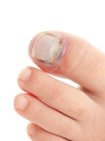 There are many different kinds of treatment options for toenail fungus, and a new paint-on product has just become one of them. “Some 35 million people in the U.S. suffer from onychomycosis,” and these infections can lead to further health complications for those who may have diabetes or other health problems. Have your doctor properly diagnose your toenail fungus condition before resorting to medication. Other treatment options for toenail fungus include oral anti-fungal prescriptions and “fungus-zapping lasers”.
There are many different kinds of treatment options for toenail fungus, and a new paint-on product has just become one of them. “Some 35 million people in the U.S. suffer from onychomycosis,” and these infections can lead to further health complications for those who may have diabetes or other health problems. Have your doctor properly diagnose your toenail fungus condition before resorting to medication. Other treatment options for toenail fungus include oral anti-fungal prescriptions and “fungus-zapping lasers”.
While toenail fungus is troublesome to eradicate, doing so is not impossible. If you have any concerns with your feet consult with Dr. Sharon Pletcher of Pennsylvania. Our doctor will assist you with all of your foot and ankle needs.
Toenail Fungus Treatment
Toenail fungus is a problem which affects many people and is hard to get rid of. Fortunately, there are several methods to go about treating toenail fungus.
Antibiotics & Treatments
Lamisil – is the most commonly effective treatment for toenail fungus. It is available as an antibiotic Terbinafine tablet and cream. Terbinafine is a chemical component which kills fungal growth on the body. Applying regular doses will gradually kill the fungal growth. It is important to keep the area clean and air free.
Talcum powder – applying powder on the feet and shoes helps keep the feet free of moisture and sweat.
Sandals or open toed shoes – wearing these will allow air movement and help keep feet dry. They also expose your feet to light, which fungus cannot tolerate. Socks with moisture wicking material also help as well
Alternative Treatments
There are always surgical procedures that are available for toenail fungus. Some people would like immediate quick removal of toenail fungus. Surgeons will be able to cut through and remove the growth using laser surgery. It is important not to try and remove it yourself. Once removed, your old shoes will need to be replaced to avoid reinfection.
If you have any questions please feel free to contact our office located in State College, PA. We offer the newest diagnostic tools and technologies to treat your foot and ankle needs.
Amile Jefferson out due to Foot Injury
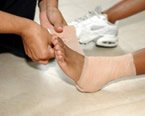 Senior forward Amile Jefferson of Duke University has been out indefinitely due to a right foot injury. Jefferson has been cited as the team’s most productive player in the past. He averaged 11.4 points and 10.3 rebounds in Duke’s first nine games and was among the best offensive rebounders in the country. Duke’s program is not unfamiliar with players suffering significant injuries. During the 2012-13 season, Ryan Kelly had missed 13 games. Before that, Kyrie Irving had suffered a right toe injury.
Senior forward Amile Jefferson of Duke University has been out indefinitely due to a right foot injury. Jefferson has been cited as the team’s most productive player in the past. He averaged 11.4 points and 10.3 rebounds in Duke’s first nine games and was among the best offensive rebounders in the country. Duke’s program is not unfamiliar with players suffering significant injuries. During the 2012-13 season, Ryan Kelly had missed 13 games. Before that, Kyrie Irving had suffered a right toe injury.
Sports related foot and ankle injuries need proper treatment before players can go back to their regular routines. If you have any concerns, consult with Dr. Sharon Pletcher of Pennsylvania. Our doctor will assist you with all of your foot and ankle needs.
Sport Related Foot and Ankle Injuries
Foot and ankle injuries are a common occurrence when it comes to athletes of any sport. While many athletes dismiss the initial aches and pains, the truth is that ignoring potential foot and ankle injuries can lead to serious problems. As athletes continue to place pressure and strain the area further, a mild injury can turn into something as serious as a rupture and may lead to a permanent disability. There are many factors that contribute to sports related foot and ankle injuries, which include failure to warm up properly, not providing support or wearing bad footwear. Common injuries and conditions athletes face, including:
- Plantar Fasciitis
- Plantar Fasciosis
- Achilles Tendinitis
- Achilles Tendon Rupture
- Ankle Sprains
Sports-related injuries are commonly treated using the RICE method. This includes rest, applying ice to the injured area, compression and elevating the ankle. More serious sprains and injuries may require surgery, which could include arthroscopic and reconstructive surgery. Rehabilitation and therapy may also be required in order to get any recovering athlete to become fully functional again. Any unusual aches and pains an athlete sustains must be evaluated by a licensed, reputable medical professional.
If you have any questions please feel free to contact our office located in State College, PA. We offer the newest diagnostic tools and technologies to treat your foot and ankle needs.
Keep Your Shoes Clean As Part of Your Daily Routine
 Keeping your shoes clean is one important factor in ensuring your feet stay clean too. Make sure to always wear socks to prevent moisture from accumulating in your shoes or on your feet. Wash your feet often to repel foot odor and odor-causing bacteria. Antiperspirant sprays are also great for killing bacteria and getting rid of foot odor. Other less common solutions include using insoles that have activated charcoal, or carbon. Activated charcoal insoles are absorbent and can be adjusted to fit the size of your shoe. Use moisture-absorbing material like cedar shoe trees or newspaper to put in your shoes after wearing them. Don’t forget to also swap often between different pairs of shoes.
Keeping your shoes clean is one important factor in ensuring your feet stay clean too. Make sure to always wear socks to prevent moisture from accumulating in your shoes or on your feet. Wash your feet often to repel foot odor and odor-causing bacteria. Antiperspirant sprays are also great for killing bacteria and getting rid of foot odor. Other less common solutions include using insoles that have activated charcoal, or carbon. Activated charcoal insoles are absorbent and can be adjusted to fit the size of your shoe. Use moisture-absorbing material like cedar shoe trees or newspaper to put in your shoes after wearing them. Don’t forget to also swap often between different pairs of shoes.
Every day foot care is very important to prevent infection and other foot ailments. If you are experiencing pain, visit Dr. Sharon Pletcher of Pennsylvania. Our doctor can treat your pain as well as any other foot or ankle condition.
Every Day Foot Care
Often, people take care of their bodies, face and hair more so than they do for their feet. But the feet are a very important aspect of our bodies, and one that we should pay more attention to. After all, without our feet, we would not be able to perform most daily tasks. It is best to check your feet regularly to make sure there are no new bruises or cuts that you may not have noticed before, for example.
For dry feet, moisturizer can easily be a remedy and can be applied as often as necessary to the affected areas. Wearing shoes that fit well can also help you maintain good foot health, as well as making it easier to walk and do daily activities without the stress or pain of ill-fitting shoes, high heels, or even flip flops.
Also, wearing clean socks with closed shoes is important to ensure that sweat and bacteria do not accumulate within the shoe. Clean socks help to prevent athlete’s foot, fungi problems, bad odors, and can absorb sweat.
If you have any questions please feel free to contact our office located in State College, PA. We offer the newest diagnostic tools and technologies to treat your foot and ankle needs.
More...
Duke’s Amile Jefferson Sidelined With Broken Foot Injury
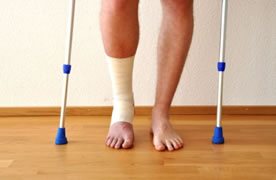 Duke’s senior forward Amile Jefferson will be sidelined for a month following a broken right foot injury after the game against Utah in Madison Square Garden. Jefferson is considered Duke’s “most consistent front court player” in the season and his absence will impact the team. Jefferson averages 11.4 points. Duke won the game against Utah with a score of 9-1, a new record.
Duke’s senior forward Amile Jefferson will be sidelined for a month following a broken right foot injury after the game against Utah in Madison Square Garden. Jefferson is considered Duke’s “most consistent front court player” in the season and his absence will impact the team. Jefferson averages 11.4 points. Duke won the game against Utah with a score of 9-1, a new record.
A broken foot requires immediate medical attention and treatment. If you are experiencing pain, visit Dr. Sharon Pletcher of Pennsylvania. Our doctor can treat your pain as well as any other foot or ankle condition.
Broken Foot Causes, Symptoms, and Treatment
A broken foot is caused by one of the bones in the foot typically breaking when bended, crushed, or stretched beyond its natural capabilities. Usually the location of the fracture indicates how the break occurred, whether it was through an object, fall, or any other type of injury.
Common Symptoms of Broken Feet:
- Bruising
- Pain
- Redness
- Swelling
- Blue (foot)
- Numbness
- Cold
- Misshapen
- Cuts
- Deformities
Those that suspect they have a broken foot shoot seek urgent medical attention where a medical professional could diagnose the severity.
Treatment for broken bones varies depending on the cause, severity and location. Some will require the use of splints, casts or crutches while others could even involve surgery to repair the broken bones. Personal care includes the use of ice and keeping the foot stabilized and elevated.
If you have any questions please feel free to contact our office located in State College, PA. We offer the newest diagnostic tools and technologies to treat your foot and ankle needs.
Kelly Osbourne and her “Holiday Mishap”
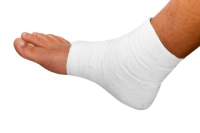 Kelly Osbourne has injured her foot in a recent “holiday mishap,” just days before the Christmas holiday. Osbourne posted pictures of her fracture foot and tendon injuries on Instagram, sporting a splint on her injured foot. The Australia’s Got Talent judge will be on crutches. Her photo on Instagram indicated her foot as being bruised and swollen, having required her to visit the hospital.
Kelly Osbourne has injured her foot in a recent “holiday mishap,” just days before the Christmas holiday. Osbourne posted pictures of her fracture foot and tendon injuries on Instagram, sporting a splint on her injured foot. The Australia’s Got Talent judge will be on crutches. Her photo on Instagram indicated her foot as being bruised and swollen, having required her to visit the hospital.
Activities, where too much pressure is put on the feet can cause stress fractures. If you are experiencing pain, visit Dr. Sharon Pletcher of Pennsylvania. Our doctor can treat your pain as well as any other foot or ankle condition.
Dealing with Stress Fractures of the Foot and Ankle
The Stress Fractures occur on the foot and ankle when muscles in these areas weaken from too much or too little use. Then the feet and ankles lose support when walking or running from the impact of the ground. Since there is no protection the bones receive the full impact of each step. The stress on the feet causes cracks to form in the bones, thus called stress fractures.
What are Stress Fractures?
Stress fractures occur frequently in individuals whose daily activities cause great impact on the feet and ankles. Stress factors are most common among:
-runners
-people affected with Osteoporosis
-play tennis or basketball
-gymnastics
-high impact workouts
Symptoms
Pain from the fractures occur in the area of the fractures, and can be constant or intermittent. It will often cause sharp or dull pain with swelling and tenderness. Engaging in any kind of activity which involves in high impact will aggravate pain.
If you have any questions please feel free to contact our office located in State College, PA. We offer the newest diagnostic tools and technologies to treat your foot and ankle needs.
The Consequences of Not Managing Your Diabetic Feet
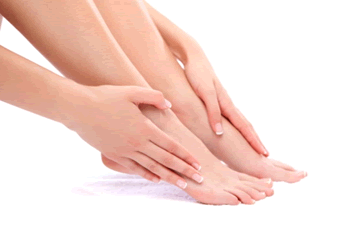 Those with diabetes must manage their feet carefully. Blood sugar levels that aren’t regulated can lead to a loss of feeling in the feet, which can further lead to injuries that may go unnoticed. Injuries that are left untreated can develop into infections, and in very severe cases, may need to be amputated. According to Dr. Rachel Natovich, who presented her research at the American Diabetes Association’s 75th Scientific Sessions along with her colleagues, “a person with diabetes has up to a 25% chance of developing a foot ulcer in their lifetime.” Research also suggested that diabetic patients with foot complications suffered decreased cognitive functioning. Diabetic foot care is important in maintaining a healthy lifestyle and preventing further injury.
Those with diabetes must manage their feet carefully. Blood sugar levels that aren’t regulated can lead to a loss of feeling in the feet, which can further lead to injuries that may go unnoticed. Injuries that are left untreated can develop into infections, and in very severe cases, may need to be amputated. According to Dr. Rachel Natovich, who presented her research at the American Diabetes Association’s 75th Scientific Sessions along with her colleagues, “a person with diabetes has up to a 25% chance of developing a foot ulcer in their lifetime.” Research also suggested that diabetic patients with foot complications suffered decreased cognitive functioning. Diabetic foot care is important in maintaining a healthy lifestyle and preventing further injury.
Diabetic foot care is important in preventing foot ailments such as ulcers. If you are experiencing pain, visit Dr. Sharon Pletcher of Pennsylvania. Our doctor can treat your pain as well as any other foot or ankle condition.
Diabetic Foot Care
Diabetes affects millions of people every year. Diabetes can damage blood vessels in many parts of the body, including the feet. Because of this, taking care of your feet is essential if you have diabetes, and having a podiatrist help monitor your foot health is highly recommended.
The Importance of Caring for Your Feet
- Routinely inspect your feet for bruises or sores.
- Wear socks that fit your feet comfortably.
- Wear comfortable shoes that provide adequate support.
Patients with diabetes should have their doctor monitor their blood levels because blood sugar levels play such a huge role in diabetic care. Monitoring these levels on a regular basis is highly advised.
It is always best to inform your healthcare professional of any concerns you may have regarding your feet, especially for diabetic patients. Early treatment and routine foot examinations are keys to maintaining proper health, especially because severe complications can arise if proper treatment is not applied.
If you have any questions please feel free to contact our office located in State College, PA. We offer the newest diagnostic tools and technologies to treat your foot and ankle needs.
Causes of Bunions
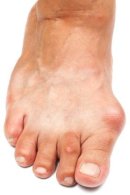 Bunions are often thought to be caused by wearing shoes that don’t fit, although that is partly true. High-heeled shoes can be on such cause of bunions, with the other predominant cause being that you inherit bunions as a dominant trait from your parents. According to Jean Brown Research, a research organization in Utah, “women are 10 times more likely to get bunions than men.” The speculated reason for this is because women are more likely to wear ill-fitting and higher-heeled shoes.
Bunions are often thought to be caused by wearing shoes that don’t fit, although that is partly true. High-heeled shoes can be on such cause of bunions, with the other predominant cause being that you inherit bunions as a dominant trait from your parents. According to Jean Brown Research, a research organization in Utah, “women are 10 times more likely to get bunions than men.” The speculated reason for this is because women are more likely to wear ill-fitting and higher-heeled shoes.
Bunion surgery usually occurs after non-surgical methods have proved to be ineffective. If you are having discomfort in your feet, contact Dr. Sharon Pletcher of Pennsylvania. Our doctor will treat your foot and ankle needs.
What is a Bunion?
A bunion is formed of swollen tissue or an enlargement of boney growth, usually located at the base joint of the toe that connects to the foot. The swelling occurs by the bones in the big toe shifting inward, which impacts the other toes of the foot. This causes the area around the base of the big toe to become inflamed and painful.
Why do Bunions Form?
- Genetics – susceptibility to bunions are often hereditary
- Stress on the feet – poorly fitted and uncomfortable footwear that places stress on feet, such as heels, can cause bunions to form
How are Bunions Diagnosed?
Doctors often perform two tests – blood tests and x-rays – when trying to diagnose bunions, especially in the early stages of development. Blood tests help determine if the foot pain is being caused by something else, such as arthritis, while x-rays provide a clear picture of your bone structure to your doctor.
How are Bunions Treated?
- Refrain from wearing heels or similar shoes that cause discomfort
- Select wider shoes that can provide more comfort and reduce pain
- Anti-inflammatory and pain management drugs
- Orthotics or foot inserts
- Surgery
If you have any questions please feel free to contact our office located in State College, PA. We offer the newest diagnostic tools and technologies to treat your foot and ankle needs.




